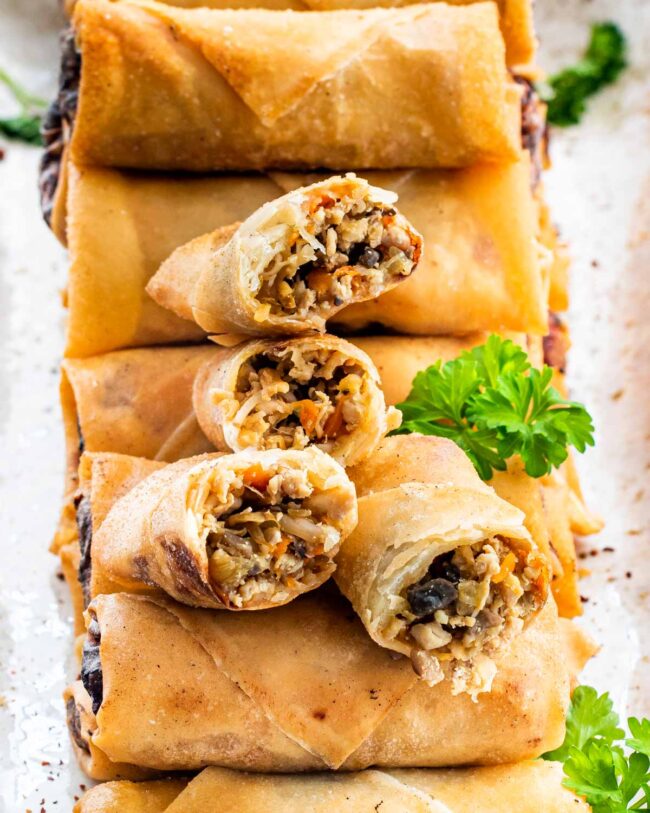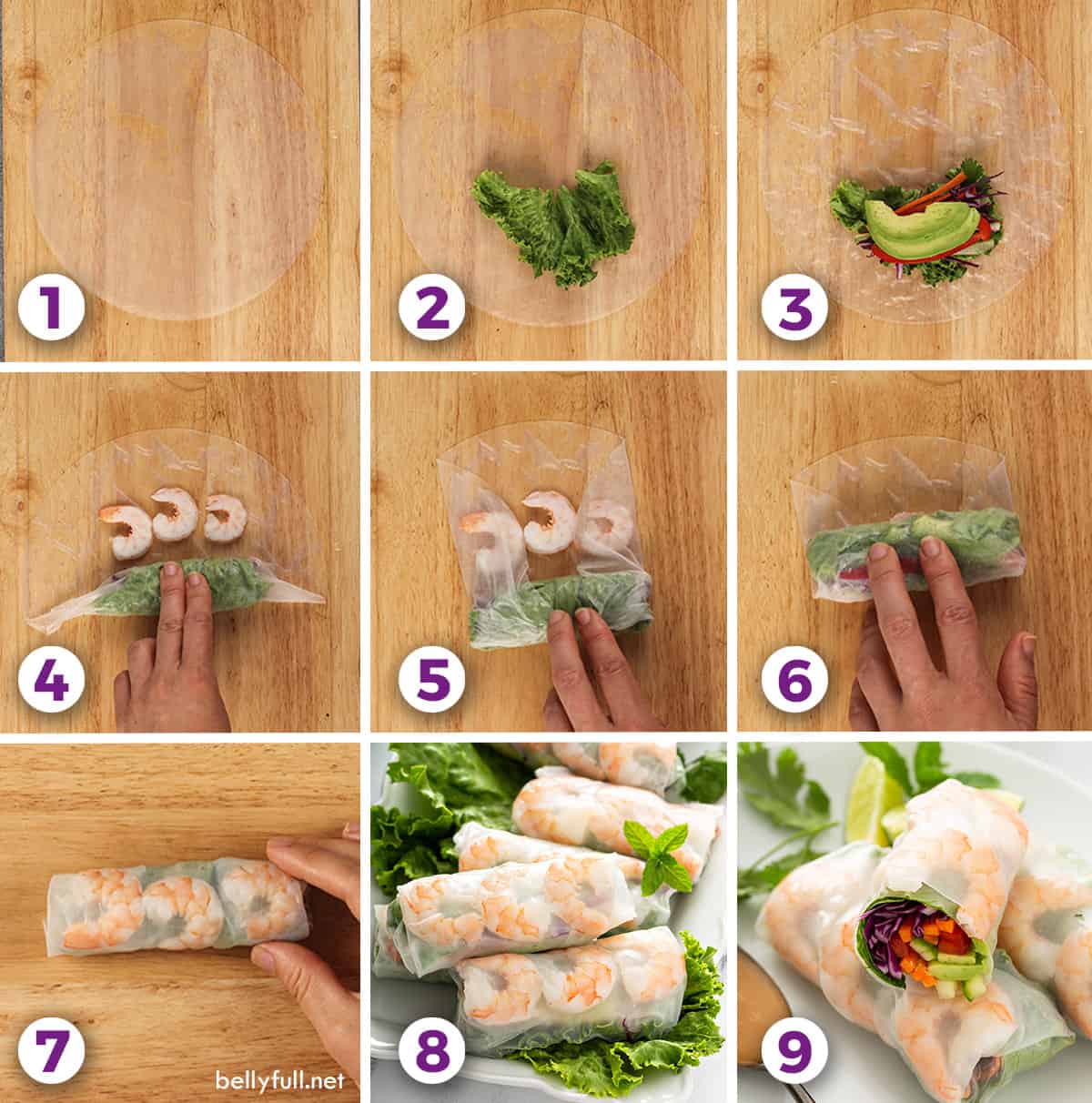Spring rolls are an incredibly popular dish that originated in Asian cuisine, notable for their fresh flavors and delightful crunch. Typically wrapped in thin rice paper or wheat wrappers, these rolls can be filled with a variety of ingredients, making them a customizable delight. They're often served as appetizers or snacks and can be enjoyed fresh or fried. Whether you’re dipping them into a tangy sauce or savoring them solo, spring rolls are sure to please any palate. In this guide, we’ll walk you through the process of making your very own spring rolls at home, highlighting both classic and creative variations along the way. Let’s roll!
Ingredients Needed for Homemade Spring Rolls

Creating delicious spring rolls at home can be a fun and rewarding culinary adventure! The beauty of spring rolls lies in their versatility, allowing you to mix and match according to your taste preferences and dietary needs. Below is a list of the essential ingredients you'll need to get started, along with optional additions to amp up the flavor.
Essential Ingredients
- Spring Roll Wrappers:
Choose between rice paper for fresh rolls or wheat wrappers for fried versions. Both options are widely available in grocery stores or Asian supermarkets.
- Protein:
Options include shrimp, chicken, tofu, or even pork. Feel free to use cooked and shredded meat or marinated options for added flavor.
- Vegetables:
Fresh veggies are key! Consider using:
- Shredded carrots
- Cucumber (julienned)
- Bell peppers (sliced)
- Lettuce leaves
- Bean sprouts
- Fresh herbs (like mint or cilantro)
- Noodles:
Rice vermicelli noodles work well for added substance, but skip them if you prefer lighter rolls.
Optional Ingredients
- Dipping Sauces:
Common choices include hoisin sauce, peanut sauce, or a simple soy sauce mixture. Feel free to experiment with homemade sauces!
- Seasonings:
A dash of salt, pepper, or even chili flakes can elevate the flavors of your filling.
With these simple ingredients on hand, you’ll be all set to prepare scrumptious homemade spring rolls that will impress your family and friends! Let’s roll up our sleeves and get cooking!
Step-by-Step Instructions for Making Spring Rolls

Making spring rolls at home can be a fun and rewarding culinary adventure! Follow these simple steps, and you’ll have delicious spring rolls ready to enjoy in no time.
- Gather Your Ingredients:
You’ll need:
- Spring roll wrappers
- Your choice of protein (shrimp, chicken, or tofu)
- Fresh vegetables (carrots, lettuce, cucumbers, bell peppers)
- Herbs (mint, cilantro, or basil)
- Dipping sauce (peanut, soy, or hoisin sauce)
- Prepare the Filling:
Cook your chosen protein as desired. If you’re using shrimp or chicken, make sure it's fully cooked. For tofu, you can sauté or bake it for extra flavor. Chop the fresh vegetables into thin strips and mince the herbs. Mix everything together in a bowl.
- Soften the Wrappers:
Fill a large bowl with warm water. Dip one rice paper wrapper into the water for about 10-15 seconds until it softens. Be careful not to leave it too long or it may become too sticky!
- Assemble the Rolls:
Place the softened wrapper on a clean surface. Add a small amount of the filling in the center, fold the sides in, and roll it up tightly but gently from the bottom. Secure the end with a little bit of water.
- Repeat:
Continue the process until all your ingredients are used. Each spring roll is unique, so have fun experimenting with different fillings!
Once you’re done, serve your spring rolls fresh with your favorite dipping sauce. Enjoy your homemade masterpiece!
Tips for Perfectly Wrapped Spring Rolls

Getting your spring rolls to look as good as they taste can sometimes be a bit challenging. But don’t worry! Here are some handy tips to help you wrap the perfect spring rolls with confidence:
- Keep Everything Even:
Make sure you distribute the filling evenly across your spring roll wrapper. This helps keep the spring roll balanced and prevents tearing.
- Don’t Overfill:
It's tempting to add a lot of filling, but too much can make wrapping impossible. Aim for about 2 tablespoons of filling per roll.
- Use Water Sparingly:
When sealing the rolls, you only need a little water. Too much can make the wrapper soggy. Just a dab will do!
- Practice Makes Perfect:
If your first few rolls don't turn out the way you hoped, don't fret! Wrapping spring rolls is a skill that gets easier with practice.
- Keep Them Moist:
If you're not eating the rolls immediately, cover them with a damp cloth or plastic wrap to prevent them from drying out.
Using these tips, you'll be able to whip up beautifully wrapped spring rolls that not only taste great but look good on the plate, too! Happy rolling!
5. Serving Suggestions for Spring Rolls
Spring rolls are an incredibly versatile dish, and how you choose to serve them can elevate your dining experience. Here are some delightful serving suggestions:
- Dipping Sauce: A dipping sauce is a must! Traditional options include:
- Peanut Sauce – Creamy and rich, perfect for those who love a nutty flavor.
- Soy Sauce with Ginger and Garlic – A savory blend that complements the fresh ingredients of the rolls.
- Sweet Chili Sauce – Adds a sweet yet spicy kick that many find irresistible.
- Garnishes: Fresh herbs or edible flowers can enhance presentation. Try:
- Fresh Cilantro – Adds a burst of flavor and color.
- Green Onions – Slice them thin for a crunchy topping.
- Sesame Seeds – A sprinkle can bring extra texture and visual appeal.
- Accompaniments: Consider serving your spring rolls with crunchy sides such as:
- Thai Mango Salad – A zesty fruit salad that pairs well.
- Rice Noodle Salad – Light and refreshing.
- Grilled Vegetables – Offer something heartier alongside your rolls.
Last but not least, remember to arrange your spring rolls in an appealing way on the plate. A smart presentation can make all the difference, turning a simple meal into a feast!
6. Conclusion and Final Thoughts
In conclusion, making spring rolls at home can be a fun and rewarding experience. They are not only tasty but also an excellent way to use up whatever fresh ingredients you have on hand. Plus, creating your own spring rolls allows for customization—making them vegan, gluten-free, or loaded with your favorite proteins!
Remember, whether you're preparing them for a cozy dinner at home, a gathering with friends, or a festive occasion, the key is in the details:
- Fresh Ingredients: Always opt for the freshest produce to ensure maximum flavor and nutrition.
- Proper Technique: Mastering the wrapping technique can take a bit of practice, but keep at it, and soon enough, you’ll be a pro!
- Experimentation: Don’t be afraid to mix and match ingredients based on what you love. Some like to incorporate proteins like shrimp or chicken, while others prefer all-veggie options.
So, gather your ingredients and no need to feel intimidated. With a little creativity and practice, you'll be serving up delicious homemade spring rolls that your friends and family will rave about. Happy rolling!
 admin
admin








